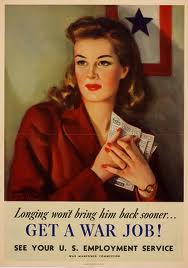The Artist was one of the most successful films at the Oscars this year. It won five awards including best picture and costume design, which some may find surprising considering it is a silent black and white French film.
The Artist is set in Hollywood from 1927 to 1932 which takes us back to the start of Hollywood's golden age which lasted until the late 1950s. The film focuses on a silent movie actor when such films were on their way out as the 'talkies' made their mark.
Flapper Outfit from The Artist
The costumes from The Artist are now on display as part of the 20th annual Art of Motion Picture Costume Design exhibit at the Fashion Institute of Design and Merchandising (FIDM) in Los Angeles.
The Artist costumes on display at FIDM
Young women, including Hollywood actresses such as Joan Crawford, below, in "The Roaring Twenties" were often referred to as flappers. They wore loose fitting dresses and girdle bras to minimise their bust and hips in order to appear boyish which was a way of rejecting the previous feminine Victorian style. This article discusses the fashions of various decades including the 1920s.
Joan Crawford
The modern woman of the 1920s was independent (she had to be when so many men died in World War I) - she drove, smoked with a long cigarette holder, voted (if you were under 30 not until 1928 in Britain), wore heavy make up and her hair short under a cloche hat, had casual sex, she danced to jazz music and drank alcohol (illegally in America due to prohibition).
In the 1920s, fashion magazines such as Vogue encouraged the flapper outlook by reinforcing the idea that women now had choices:
"Gone is the prim, put-upon female, the old maid of bygone days, and in her place is an independent person who glories in the fact that she doesn't have to marry unless she wants to." (Vogue 1925).
Vogue also ensured all women had access to the flapper fashion by providing sewing patterns for those who could not afford to buy the garments from stores.
A Vogue cover, 1926
The flapper fashion came to an end with the Wall Street crash of 1929 and the great depression, which followed. However, the flapper look is a key trend for Spring/Summer 2012:
Gucci flapper dress (Marie Claire)
How does a historical trend come back into style? Designers are inspired by historical fashions but they update the look for the modern consumer. Laver (1937) argues that fashions change and come around again due to the theory of the 'shifting erogenous zones' in that "different parts of the body are emphasised by veiling one part and unveiling another" (Kim, Fiore and Kim 2011 pp. 16-17). Essentially, when one part of the female body has been repeatedly exposed the item goes out of fashion to prevent men becoming bored. However, there has been criticism of this argument, for example, from a feminist perspective by Wilson (1985). She claims that this is incorrect as any item of clothing may focus on more than one part of the body, she highlights other influences such as Hollywood (such as The Artist making the flapper fashionable again) rather than what men think and that this theory is flawed as it is limited to women's clothing.


























